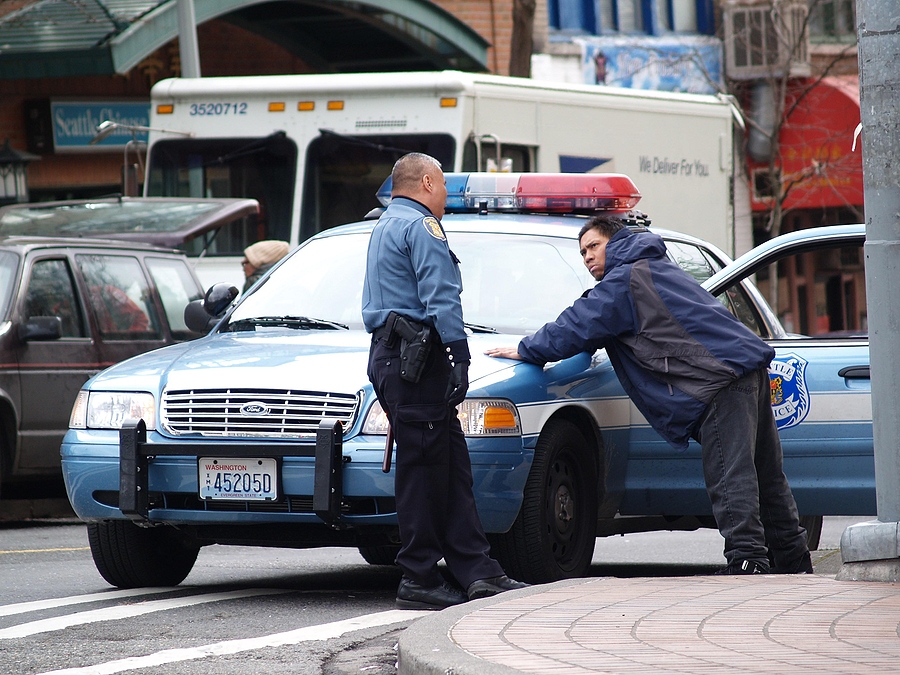Are Drunk Driving (DUI / OUI) Checkpoints Legal?
I’m Attorney Mike Contant. A question I’m often asked is, “Are drunk driving roadblocks legal?” And the short answer is, “If they’re done the right way, they can be.”
Normally, in order to stop a car, the police have to have some suspicion to believe that the car is doing something wrong, such as speeding or a traffic violation. In the case of drunk driving, they have to have a reason to suspect that the drivers are actually drunk. They may be weaving all over the road or have possibly caused an accident.
OUI roadblocks are essentially one of the exceptions to this particular rule. And the reason behind this and why the courts have come up with these reasons are as follows, “If they’re done the right way, they can be considered legal.”
The Requirements for Drunk Driving (DUI / OUI) Roadblocks
Now, the first requirement is that they have to be based on the public interest. Everyone knows of the dangers of drunk driving and that many people die in drunk driving accidents. They also know that it has become a bad thing in the Commonwealth of Massachusetts.
In The Public Interest
So the courts have said, “If you’re going to do a drunk driving roadblock, it needs to be based upon that particular interest of stopping accidents, stopping drunk drivers, and stopping the fatalities.” And the areas selected by the police to do roadblocks have to be areas where they’ve had a lot of incidents of drunk driving.
And that has to be proven either through arrest records, accidents, or fatalities that are all based upon drunk driving. So they have to choose the area for a drunk driving roadblock to be an area where drunk driving is a problem in order to take away the need to have that suspicion.
The Selection Cannot Be Arbitrary
The second requirement is that the selection of the area where cars will be stopped at a roadblock can’t be arbitrary. This means that it can’t be at the officer’s whim. It can’t be at his discretion. The cops don’t get to choose. Essentially and in most cases, what happens is that every car gets stopped. Specifically, every car gets stopped for a brief period of time at this roadblock, taking away all of the officers’ discretion.
The Safety Of The Public
Another requirement is that the safety of the public has to be assured while they’re doing this. Now, again, they’re doing something that’s unusual for the public. Usually, people are just driving down the road and don’t plan on being stopped. So seeing a roadblock can cause fear in the general public. And the police don’t want to cause fear and inconvenience.
So they have to make sure that the area is well lit and clearly marked. Typically, they’ll have signs announcing the roadblock several hundred feet or yards away, saying, “There’s a roadblock coming up. You need to stop.” Often, there will be cones directing people to particular lanes where an officer will talk to them. It has to be in an area where the people’s safety is assured.
Inconvenience Must Be Minimized
Another requirement is that the inconvenience to the person being stopped must be minimized. What that means is that they’re conducting the stop based upon no suspicion of criminal activity whatsoever. So in order to make sure that the general public isn’t significantly inconvenienced, they have to make sure it’s quick.
What that typically means is that a person who has not been drinking and driving and there’s nothing to suspect it should be in and out of there really quickly. When they get to the roadblock, the officer talks to them very briefly, maybe giving them some information on the dangers of drunk driving.
If the officer doesn’t detect anything in that very brief 10, 15, 20, or 30-second period of time of talking to the person, that person should be sent on their way in a very short period of time.
If A Driver May Have Been Drinking
Then again, the officers may detect that the driver may have been drinking. They may smell alcohol, hear slurred speech, or see something in the way they’re driving. In that case, they send only those people to a second area, where more screening will be conducted.
That screening may include more questioning, and potentially asking them to do field sobriety tests, or maybe even a breathalyzer test. But only in those circumstances. People where there’s no suspicion need to be sent on their way very quickly.
It Must Follow A Plan
Another very important requirement is that this has to be done according to a plan. And it can’t just be any plan. It has to be a plan that’s actually created by a supervisory person of the department. It could be a captain in the state police barracks. It can be someone higher up in the particular police department.
But there has to be a plan. The plan has to settle all these factors–where the roadblock is going to be conducted and why they selected that location. They have to show within the plan exactly what each officer is supposed to do and say in the sequence. It also has to show how many signs there are going to be, whether they are going to use cones, and where they are going to direct the people.
What The Plan Does
Basically, the plan is taking away all the discretion of the officers to just go off script and do what they want. This plan also has to be in writing. The state police of Massachusetts actually have a set plan they use for these things.
And it’s very important that they’re taking away any discretion from the officers to do what they want. They have to follow this plan or this script to the letter or there could be issues relative to the legality of this particular type of stop.
They Should Give Advanced Notice
There’s also something else, which is not so much a requirement but a suggestion. The courts have said that, “We’re not going to require you to give advanced notice to the public by publishing this in the newspaper or in other media outlets, such as on TV or the Internet.” But it’s a great idea.
And the courts have also said, “Although we’re not requiring it, we think the best practice would be to give advance notice to the public through the publication of the date, the time, and the approximate place, but not the exact place, where you’re going to be conducting this particular roadblock.”
So these are the requirements of what should be present when the police are conducting any type of drunk driving or OUI roadblock. If you have any questions about this or anything related to drunk driving or traffic offenses, please feel free to give me a call or shoot me an email. I’d be happy to speak with you about it.






